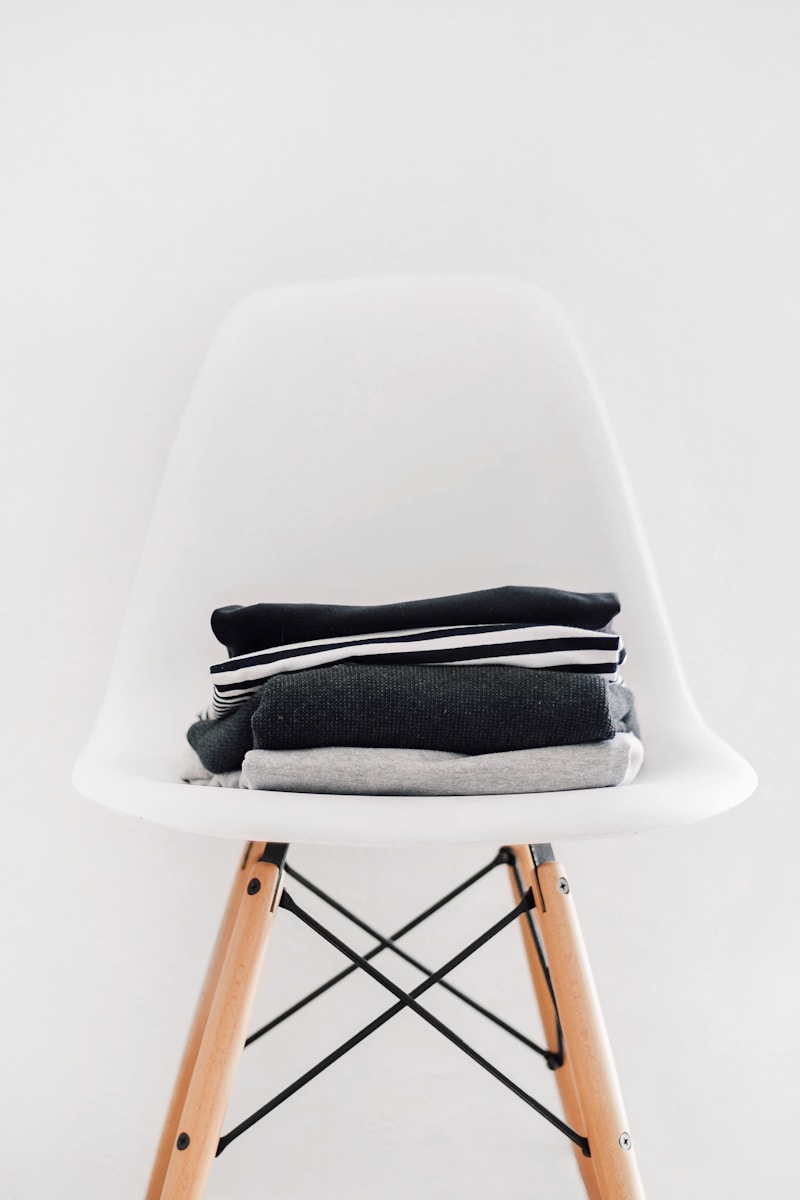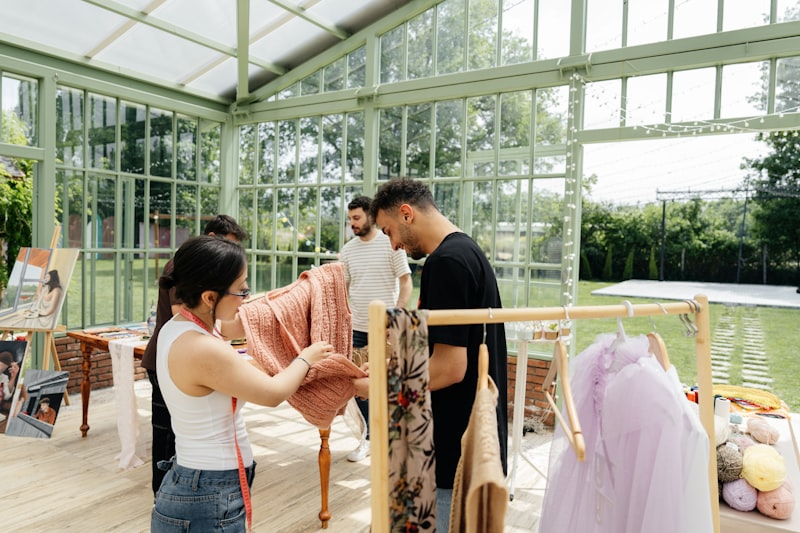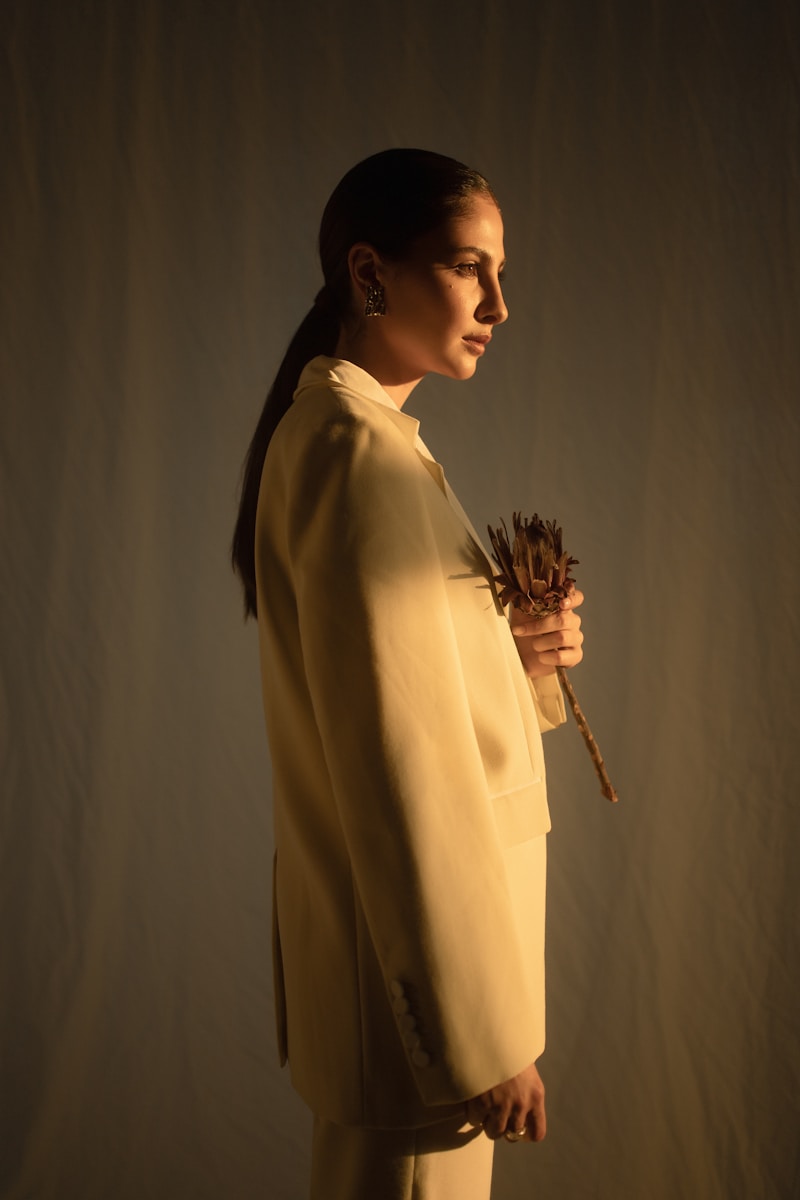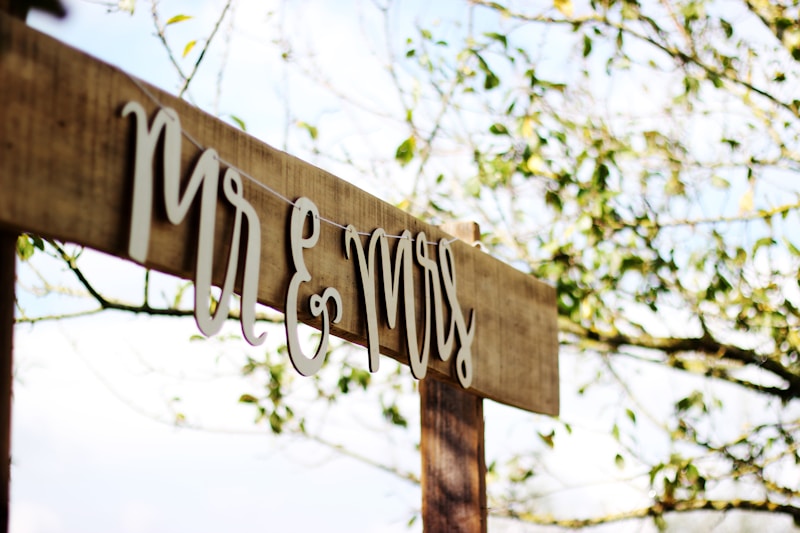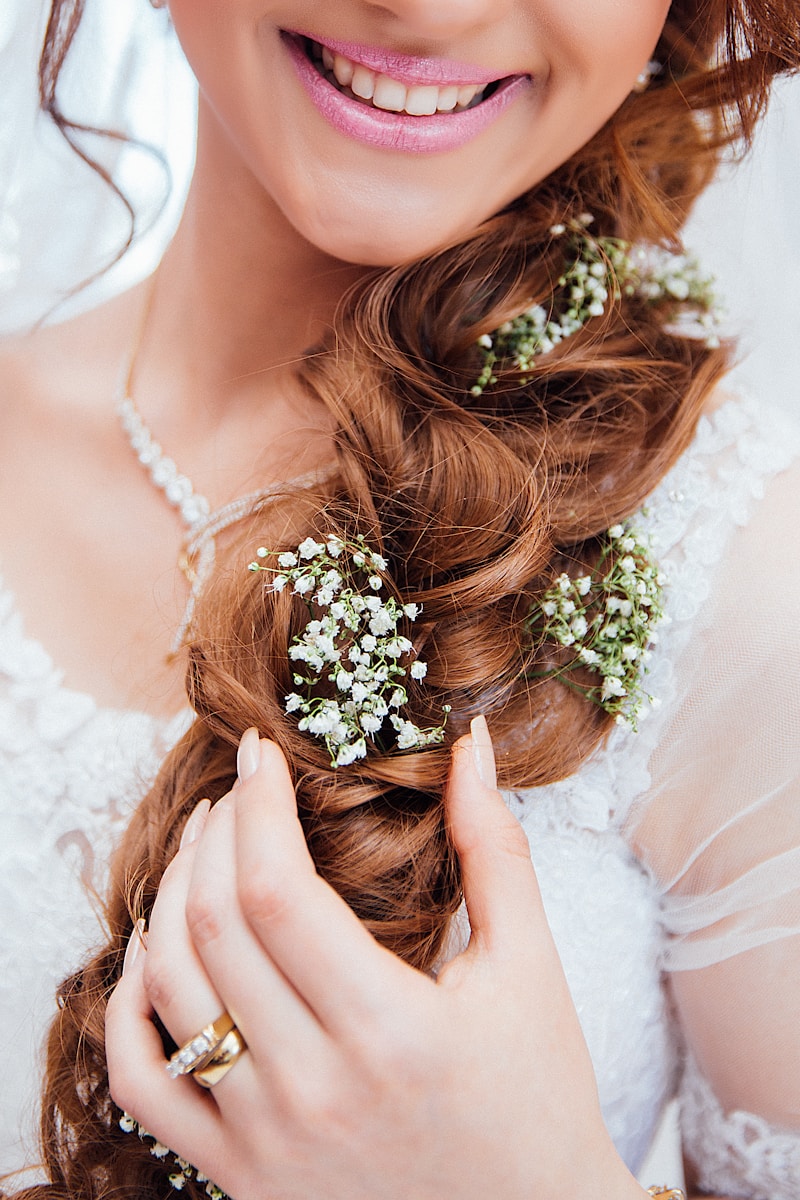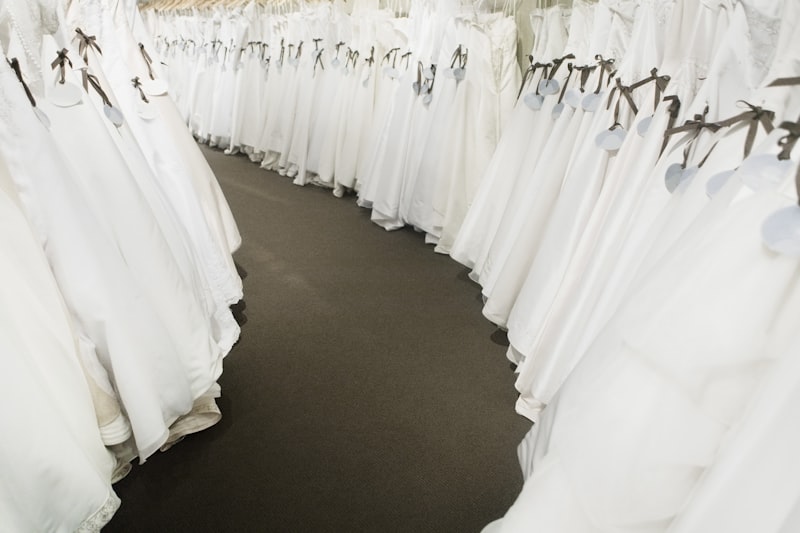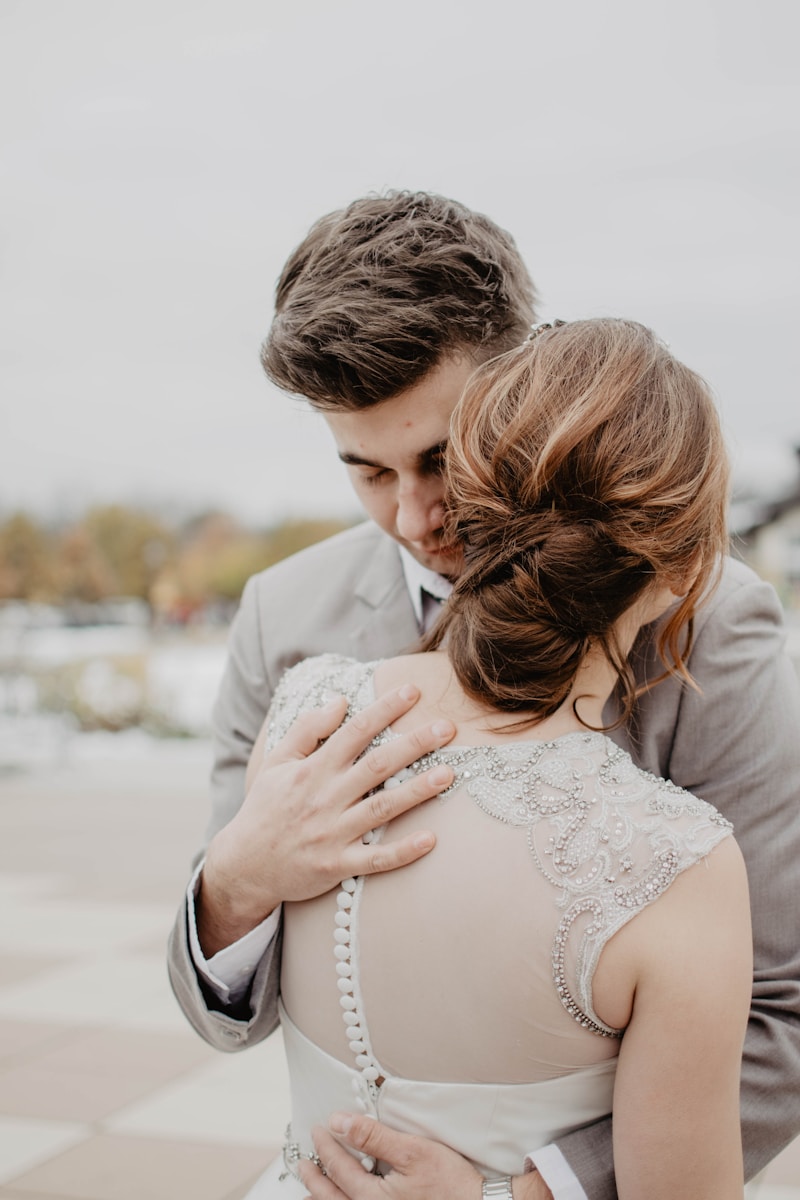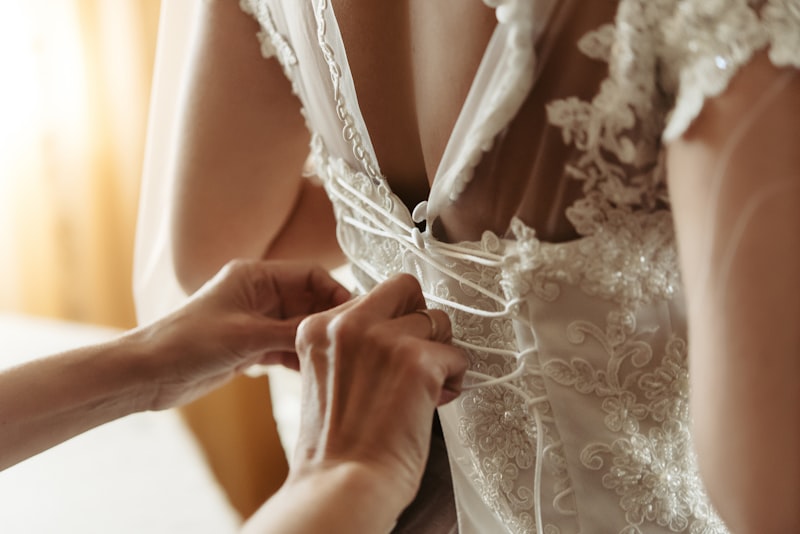Understanding Bridal Customer Preferences: Key Insights for Wedding Planners
Introduction to Bridal Customer PreferencesThe bridal industry is incredibly dynamic and diverse, with customers having a wide range of preferences that can vary significantly based on factors such as culture, geography, and individual tastes. Understanding bridal customer preferences is crucial for wedding planners and vendors aiming to create personalized experiences that resonate with couples as they embark on their journey to marriage. By comprehensively analyzing these preferences, professionals can significantly enhance their offerings and improve customer satisfaction.Why Customer Preferences MatterCustomer preferences play a pivotal role in the success of wedding planning services. Here are some reasons why understanding these preferences is essential: Personalized Experiences: Tailoring services according to customer preferences leads to a more personal and memorable wedding experience. Competitive Advantage: Knowing what customers want can provide a significant edge over competitors who may not take the time to understand their clients. Improved Marketing Strategies: Understanding customer preferences can guide marketing efforts, ensuring that promotional content resonates with the target audience. Informed Product Development: Insights into preferences can help in developing and curating products and services that truly meet the needs of brides and grooms.Key Factors Influencing Bridal Customer PreferencesSeveral factors can shape bridal customer preferences, a...
Developing a Signature Style for Bridal Collections: A Comprehensive Guide
Creating a signature style for bridal collections is essential in a highly competitive market. Whether you're an established designer or a newcomer, a unique aesthetic will distinguish your creations and resonate with your target audience. This article will delve into the nuances of developing a signature style, incorporating elements like color palettes, fabric choices, and design details, all while ensuring your work remains true to your vision. We will use examples from well-known designers and explore various aspects of the bridal fashion industry.The Importance of a Signature StyleA signature style serves as the calling card for a designer. It reflects personal creativity and helps customers identify and connect with your brand. This unique identity fosters brand loyalty and can significantly impact business success. Here are some key reasons why developing a signature style is crucial:Brand Recognition: A distinct style makes it easier for clients to remember your brand.Targeted Marketing: It helps in creating marketing strategies tailored to your specific audience.Client Loyalty: When clients resonate with your style, they are more likely to return for future collections.How to Create Your Signature Style1. Understand Your Target MarketBefore diving into design, it's vital to understand your target market. Who are the brides that you envision dressing? What are their preferences, demographics, and style affinities? Conduct research—including surveys and interviews—to g...
Exploring the Latest Wedding Fashion Design Trends for 2023
Weddings are more than just a celebration of love; they are an opportunity for couples to express their unique styles and personalities through fashion. As we dive into 2023, the wedding fashion design trends are evolving at an unprecedented pace, reflecting cultural changes, sustainability, and individuality. Whether you’re a bride, groom, or a guest preparing for a wedding, understanding these trends can help you make informed choices. In this article, we will explore the exciting wedding fashion design trends, key elements, and tips for the upcoming wedding seasons. 1. The Rise of Sustainable Fashion As the world becomes increasingly aware of environmental issues, sustainable fashion is taking the spotlight in wedding design. Couples are opting for ethically sourced materials and designs that minimize their carbon footprint. Here are some key elements: Key Elements of Sustainable Wedding FashionDescription Eco-friendly MaterialsBamboo silk, organic cotton, and recycled fabrics. Vintage and Second-hand OptionsChoosing pre-loved dresses or upcycled designs. Local DesignersSupporting local artisans who use sustainable practices. Choosing sustainable wedding fashion not only contributes positively to the environment but also supports local economies and artisans. 2. Customization and Personalization In 2023, the trend of customization continues to grow. Couples want their wedding attire to tell their stories. Tailor-made outfits allow for personal touches tha...
Comprehensive Analysis of the Bridal Fashion Market: Trends, Insights, and Future Prospects
Understanding the Bridal Fashion MarketThe bridal fashion market is a vibrant and ever-evolving segment of the fashion industry that caters to one of life's most significant events: weddings. As couples across the globe embark on their matrimonial journeys, understanding the dynamics of this market becomes crucial for designers, retailers, and even brides-to-be. In this article, we will conduct a thorough analysis of the bridal fashion market, exploring its current trends, challenges, and future opportunities. Market OverviewThe global bridal fashion market is projected to reach a value of $72 billion by 2025, growing at a CAGR of around 5% during the forecast period. This growth is fueled by various factors including cultural shifts, changing consumer preferences, and the rise of e-commerce.Key Factors Driving Market GrowthIncreasing disposable income: With rising living standards, more couples are willing to spend on high-quality bridal attire and accessories.Cultural shifts: Societal norms surrounding marriage and weddings are evolving, with many opting for personalized and unique wedding experiences.Digital influence: The rise of social media platforms like Instagram and Pinterest has led to increased visibility for designers and a surge in bridal trends.Trends in Bridal FashionThe bridal fashion landscape is diverse, with trends that vary across regions and cultures. Some notable trends include:TrendDescriptionMinimalismSimple, clean-cut designs focusing on elegant silho...
Understanding the Bridal Gown Production Timeline: A Comprehensive Guide
IntroductionPlanning a wedding can be a delightful yet overwhelming experience for many couples. Among the myriad of details to consider, one of the most significant aspects is selecting the perfect bridal gown. Understanding the bridal gown production timeline is crucial for brides-to-be to ensure their dream dress is ready in time for their big day. In this article, we will explore the complexities of the bridal gown production timeline, what affects it, and tips for brides to navigate this journey smoothly. The Bridal Gown Production Timeline ExplainedThe bridal gown production process can vary widely depending on several factors, including the design, materials, and the designer's capabilities. Typically, the timeline can be broken down into several key phases:PhaseDurationDetailsDesign Consultation1-2 weeksInitial discussions regarding style, fabric, and budget.Measurement & Fittings2-4 weeksTaking accurate measurements and scheduling fittings.Pattern Creation2-3 weeksCreating a custom pattern based on the measurements.Sample & Initial Fitting4-6 weeksCreating a sample dress for the first fitting.Finalizing Fabrics & Details2 weeksSelecting final fabrics and embellishments.Production8-12 weeksCompleting the actual dress based on the finalized design.Final Fitting2 weeksEnsuring the gown fits perfectly before the wedding.Alterations1-2 weeksMaking any necessary adjustments.Factors Influencing the TimelineThe timeline outlined above is a general guideline. Several factors ...
The Evolution of Technology in Bridal Garment Production: A Comprehensive Overview
Introduction to Technology in Bridal Garment ProductionIn recent years, the bridal garment industry has witnessed a significant transformation, primarily driven by advancements in technology. From design to production, technology plays a crucial role in enhancing efficiency, reducing costs, and improving the overall quality of bridal garments. This article will explore the various technological innovations in bridal garment production, their benefits, and the future of the industry.Technological Innovations in Bridal Garment ProductionBridal garment production combines traditional craftsmanship with cutting-edge technology. Here are some of the key technological advancements that have reshaped this sector:TechnologyDescription3D PrintingThis technology allows designers to create intricate lace patterns and embellishments, significantly reducing the time required for manual labor.CAD SoftwareComputer-Aided Design (CAD) software enables designers to visualize their creations in a digital format, making adjustments easier and more efficient.Automated Cutting MachinesThese machines improve accuracy and speed by cutting multiple layers of fabric simultaneously, minimizing waste.Virtual Fitting RoomsVirtual fitting technology offers brides the ability to try on dresses digitally, enhancing the shopping experience without the need for physical alterations initially.Digital Fabric PrintingThis method allows for custom patterns and colors to be applied directly to fabrics, enabling mo...
Discover the Benefits of Tailored Wedding Dress Services for Your Dream Wedding
Why Tailored Wedding Dress Services are Essential for Every BrideYour wedding day is one of the most significant moments in your life, and every detail matters—from the venue and decor to the dress you wear. For many brides, wearing a wedding dress that is perfectly fitted to their body is non-negotiable. This is where tailored wedding dress services come into play, offering bespoke solutions that transform the bridal experience into a personalized journey. In this article, we’ll explore the myriad benefits of these specialized services, how they can elevate your wedding attire, and what you need to consider when opting for a tailored wedding dress.What Are Tailored Wedding Dress Services?Tailored wedding dress services comprise the variety of options available to customize a wedding gown to the bride's specific measurements, preferences, and style. These services can include everything from designing a gown from scratch to making alterations on a purchased dress. Brides often seek these services for: Unique Designs: Custom designs that reflect personal style. Perfect Fit: Gowns tailored to individual measurements. Quality Materials: Higher quality fabrics and craftsmanship.The Advantages of Tailored Wedding Dress ServicesChoosing tailored wedding dress services can be one of the best decisions you make in the lead-up to your big day. Here are some compelling reasons to consider them:1. A Perfect FitWhen it comes to wedding dresses, fit is everything. An ill-fitting ...
Ultimate Guide to Wedding Dress Prototyping and Sampling
Understanding Wedding Dress Prototyping and SamplingIn the world of bridal fashion, the journey from a designer's imagination to a beautiful wedding dress involves various crucial steps. Among these, wedding dress prototyping and sampling play a significant role. This process ensures that the final product reflects the designer's vision while meeting the bride's expectations. In this guide, we will explore the intricacies of prototyping and sampling in wedding dress design, including its significance, methodologies, and practical tips for designers.The Importance of Prototyping and SamplingThe prototyping and sampling phases in wedding dress design are vital for several reasons:Validation of Design Concepts: Prototypes allow designers to visualize their ideas in a tangible form, making it easier to identify potential flaws before the final creation.Fitting and Adjustments: Sampling is critical for ensuring the dress fits well. Brides often have specific body shapes and measurements that need to be considered during this phase.Fabric and Material Testing: Prototypes enable designers to test different fabrics and materials, ensuring they achieve the desired look and feel.Budget Management: By identifying design flaws early on, designers can save on costs that might arise from last-minute changes.Steps in the Wedding Dress Prototyping ProcessThe wedding dress prototyping process can be broken down into several key steps:StepDetailsConcept DevelopmentBrainstorming design ideas, s...
Diverse Bridal Dress Styles Across Cultures: A Celebration of Love and Tradition
Weddings are a universal celebration that transcends geographical borders, languages, and cultures. One of the most fascinating aspects of these ceremonies is how diverse bridal dress styles vary across different cultures. From traditional Indian sarees to elegant white gowns in Western countries, the bridal attire reflects individual heritage, personal preferences, and societal values. This article explores the intricate beauty of diverse bridal dress styles across cultures, offering insight into their meanings and significance.The Importance of Bridal AttireBridal attire is more than just clothing; it symbolizes the essence of love, commitment, and the journey ahead. In many cultures, the bride's outfit is imbued with rich history, often passed down through generations. The colors, fabrics, and styles chosen can signify various themes, from prosperity to purity. Each culture has its own unique take on bridal wear, making the wedding experience wonderfully varied.1. Western Bridal StylesIn many Western cultures, the classic white wedding dress has become synonymous with bridal attire. This tradition dates back to Queen Victoria's wedding to Prince Albert in 1840, when she chose a white gown instead of the traditional royal colors.Key FeaturesDescriptionColorPrimarily white, symbolizing purity and innocence.FabricSilk, satin, lace, and tulle are commonly used materials.StylesA-line, ball gown, mermaid, and sheath are popular silhouettes.In addition to traditional white gowns,...
Maximizing Production Efficiency in Wedding Gown Factories: Strategies and Insights
In the competitive world of wedding fashion, the success of a gown factory largely hinges on its production efficiency. Achieving optimal production efficiency not only minimizes costs but also enhances product quality and customer satisfaction. In this article, we will delve into various strategies that wedding gown factories can implement to maximize their production efficiency, while addressing common questions related to this essential topic. Additionally, we will explore relevant metrics, technologies, and best practices that contribute to streamlined operations in this unique industry.Understanding Production EfficiencyProduction efficiency refers to the ratio of output produced by a factory relative to the inputs consumed in the production process. In the context of wedding gown factories, several factors impact production efficiency, including labor, materials, technology, and processes. By understanding these components, gown manufacturers can identify areas for improvement.Key Factors Affecting Production EfficiencyFactorDescriptionLaborSkilled labor is essential for crafting high-quality wedding gowns. Training and workforce management play a crucial role in efficiency.MaterialsThe quality and availability of materials can affect production timelines and costs. Efficient supply chain management is vital.TechnologyAutomation and advanced software can streamline processes and reduce manual errors, thus enhancing efficiency.ProcessesStandardizing and optimizing produc...
The Impact of Digital Marketing on Bridal Sales
In today's digital age, the way businesses market their products has undergone a significant transformation. This is particularly evident in the bridal industry, where the impact of digital marketing on bridal sales has become a pivotal factor in driving growth and engagement. Through social media platforms, influencer partnerships, and targeted ad campaigns, bridal retailers are reaching their customers more effectively than ever before.Understanding Digital Marketing in the Bridal SectorDigital marketing encompasses a variety of strategies aimed at promoting products and services through digital channels. In the bridal sector, effective digital marketing can involve:Social Media MarketingContent MarketingEmail MarketingSearch Engine Optimization (SEO)Pay-Per-Click Advertising1. Social Media MarketingSocial media platforms like Instagram, Pinterest, and Facebook are crucial for bridal marketing. Engaging photos of gowns, bouquets, and wedding venues can captivate potential brides. For instance, an Instagram account dedicated to showcasing real weddings can inspire brides and encourage them to interact with the brand.2. Influencer PartnershipsPartnering with influencers who specialize in wedding planning can greatly boost visibility. Influencers often have a loyal following that trusts their recommendations, which can lead to increased bridal sales.3. Content MarketingCreating valuable content like blogs about wedding planning, checklists, or the latest bridal trends can help...
Tradition Versus Modernity in Bridal Attire Manufacturing
As the world evolves, so do the elements that define significant cultural practices, particularly in the realm of bridal attire manufacturing. This article delves into the intricacies of how traditional methods and modern innovations coexist within this dynamic industry, shedding light on the factors influencing their evolution, the challenges faced, and the potential future of bridal attire.The Historical Context of Bridal AttireBridal attire is often a reflection of cultural heritage. Traditionally, wedding dresses have carried with them symbolism, intricate craftsmanship, and local fabrics that tell a story unique to each culture. From the opulent brocade of Victorian England to the vibrant silks of Indian lehengas, the designs and materials chosen for wedding attire are deeply rooted in tradition.Cultural Significance and SymbolismEach region has its own symbolic representation through bridal attire. For instance, white dresses symbolize purity in Western weddings, while red is favored in many Asian cultures, representing prosperity and good fortune. Understanding these meanings enriches the overall narrative surrounding bridal fashion.CultureTraditional ColorsMaterials UsedIconic StylesWesternWhite/IvorySatin, LaceA-line, Ball gownIndianRed, GoldSilk, VelvetLehenga, SariChineseRedSilkCheongsamAfricanBright ColorsKente, AnkaraTraditional DressShifts Toward ModernityWhile tradition plays an essential role in bridal attire, modernity brings a refreshing shift to the industr...
Keeping Up with Seasonal Wedding Trends: Your Ultimate Guide
Introduction to Seasonal Wedding TrendsWeddings are a celebration of love and unity, and every year, we see new trends emerging that reflect cultural shifts, innovative ideas, and evolving styles. Keeping up with seasonal wedding trends is essential for couples looking to create a unique and memorable experience for their special day. This guide will explore current trends across the four seasons, offering tips, ideas, and inspiration for all aspects of wedding planning.Spring Wedding TrendsSpring weddings are synonymous with renewal and rejuvenation. As flowers bloom and nature comes alive, couples often choose fresh and vibrant palettes. Here are some key trends:TrendsDescriptionWildflower BouquetsNatural and organic arrangements that evoke a sense of rustic charm.Pastel Color PalettesSoft hues such as blush pink, lavender, and mint green create a romantic ambiance.Outdoor CeremoniesCouples are increasingly opting for garden or park settings to take advantage of pleasant weather.Bridal Fashion for SpringFor brides, spring calls for light, airy fabrics that float gracefully. Dresses featuring floral prints, lace details, and less structure are on the rise. Consider wearing a gown with bell sleeves or a high-low hem for an updated look.Summer Wedding TrendsSummer is a time for celebration, and weddings during this season often feature bold colors and lively themes. Here are the latest trends:TrendsDescriptionBeach WeddingsCouples are choosing to say "I do" by the ocean, incor...
The Importance of Fit in Bridal Dress Production
When it comes to bridal dress production, the significance of fit cannot be underestimated. The perfect wedding dress is not just about the visual appeal; it's equally about how well the dress fits and complements the bride's figure. The right fit can enhance confidence and ensure that the bride feels beautiful on one of the most important days of her life. In this article, we will explore the critical role that fit plays in bridal dress production, along with tips and considerations for achieving that ideal fit. Understanding the Concept of Fit Fit refers to how a garment conforms to the body's dimensions, which can vary significantly from one individual to another. The perfect fit in bridal dress production goes beyond mere measurements; it requires an understanding of body shapes, garment construction, and fabric behavior. Here are some key factors that contribute to the importance of fit: 1. Body Shapes and Types Brides come in all shapes and sizes, and recognizing this diversity is essential in bridal dress production. There are several common body types, including: A-line Hourglass Pear-shaped Apple-shaped Straight/Rectangle Each body type has its own characteristics, and the fit of the dress should be tailored accordingly to create a harmonious silhouette. 2. Fabric Choices and Fit The type of fabric used in a bridal dress significantly affects how the dress fits. More structured fabrics can hold their shape better, while lighter, flowing fabrics may ...

